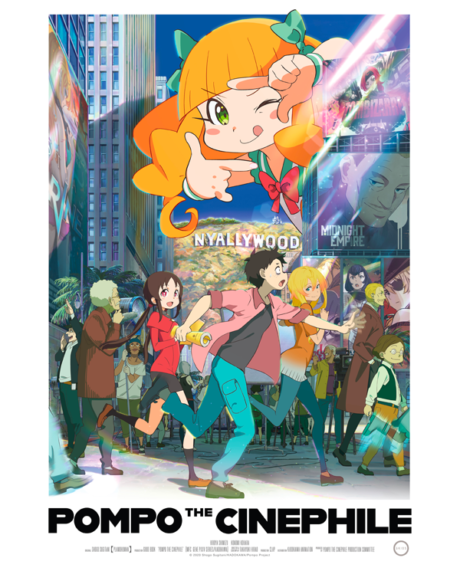Purrr....
- Creative transitions
- Comical
- Film making
Hisss!
- Transition scene jumping confuses at first
- Little action
Studio
CLAP Animation StudioDirector
Takayuki HiraoGenre
Animation, Comedy, DramaRated
PG-13Theatrical Release Date (NA)
Apr 29, 2022Film Length
1hr 34minPurchase From
Pompo the Cinephile is a film about making a movie and the struggles of creating a successful one. It is packed with creative scenes and intriguing scenarios many viewers have not experienced; nonetheless, watching it is an enjoyable experience.
First Time’s the Charm
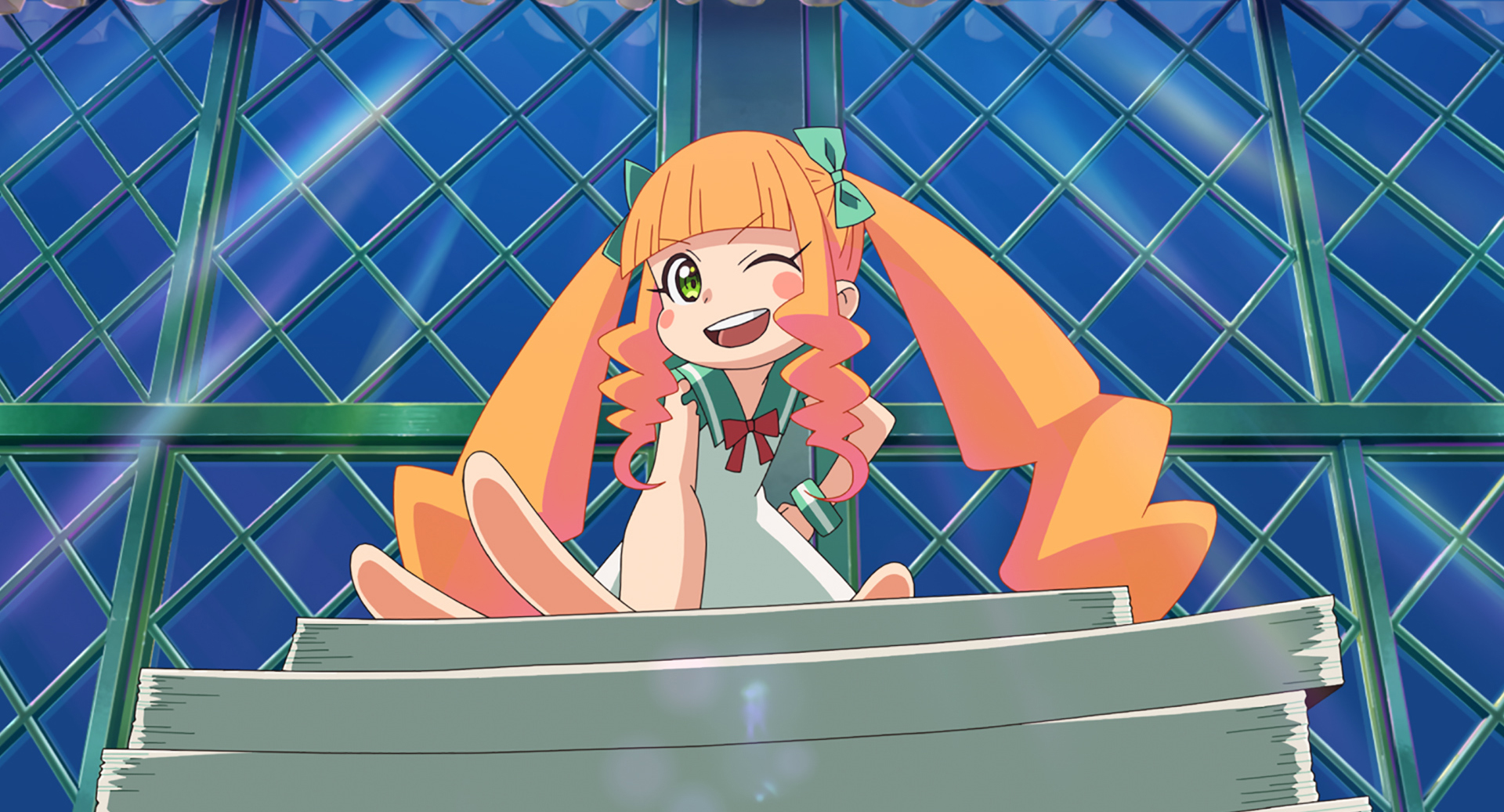
This movie-making film is studio CLAP’s first feature. The story itself is based on the manga series, Eiga Daisuki Ponpo-san, originally started on Pixiv, a Japanese online community for artists. Taking a graphic novel about producing movies and turning it into an animated film truly brings the series to life, and the studio has done a marvelous job doing so.
Pompo the Cinephile takes the story in a different angle than most films today. Instead of focusing on a fantastical narrative, it looks at the struggles a filmmaker goes through, the anxiety of turning their first film into a masterpiece.
Pompo, a young girl who’s well known in Nyallywood, the capital of the movie-making world, is a talented and gutsy producer. However, the films she’s known for are B-movies, also known as low-budget films. Still, she has a knack for taking a typical story and making it look and feel like a high-budget production. The film dives into her backstory of how she inherited her talent from her grandfather, who’s considered a legendary producer in the industry. Once he retired, she received the traits and skills to be successful as well.
While the name of this animated film has Pompo in the name, it focuses more on Gene Fini, Pompo’s assistant. Pompo, despite her young appearance as a little girl, acts like a supervisor for Gene. One day, she challenges Gene to direct her next feature called “Meister”. It’s a film about an artistic conductor with a dramatic background. Additionally, she brings in two main actors to play their roles: Martin Braddock, a veteran actor known as the best in the world, and Nathalie Woodward, an aspiring actress looking to land her first gig.

While the narrative focuses mainly on Gene’s story, it breaks away to showcase Nathalie’s side and how she lands her first role. Both Nathalie and Gene are in similar situations, being in a position they’ve dreamed of having. Gene is creating his own movie and Nathalie is becoming an actress. At first, the movie made it appear as if she and Gene would be the main characters sharing the spotlight, but later, it mainly focuses on Gene’s growth as a director. As for the other actor, Martin Braddock, he’s a side character who comes off as somewhat cocky but still supportive of Gene.
Gene doesn’t have friends outside the film industry, but there’s a scenario in the beginning of Pompo the Cinephile where a classmate at his high school will reappear later on. Though his classmate’s role isn’t significant at first, the movie does bring him in the spotlight more as it progresses. It feels odd at first introducing this old classmate, but his role does make for a significant part of the film.
A Masterpiece in the Making

At first, one would think that the plot of the movie would be based on the drama and struggles within the film’s team. Not so much. In fact, everyone in the film business is very supportive and mostly positive. It’s more about Gene learning about creating short trailers, directing camera shots, and editing the film before its screening. Even though Gene is new to directing, he has a knack for what he’s looking for in his first film.
There are situations where Gene comes up with alternatives. For example, there’s an issue with fewer goats being available on set for a shot. To get around it, Gene suggests using fog as an alternative to utilize the smaller number of animals. Additionally, he comes up with new shots to create what’s not in the original script. Pompo is impressed with the idea and lets Gene take creative control and be in charge of shooting.
Gene is also his own worst enemy. He’s put into a situation where he struggles to crawl out. One of the biggest questions he’s asked is what is he making “Meister” for. For himself? For Pompo? This takes a toll on him as he struggles to find the answer, and it’s not that simple to solve.
Due to such struggles and wanting to shoot new footage after the initial shots have been completed, it not only causes health problems for him, but he also runs the risk of his film never being released. It’s not just about making the film, but the effect it makes when money is involved. The longer the movie takes to be released, its sponsors pull out, making it difficult to find new financial support.
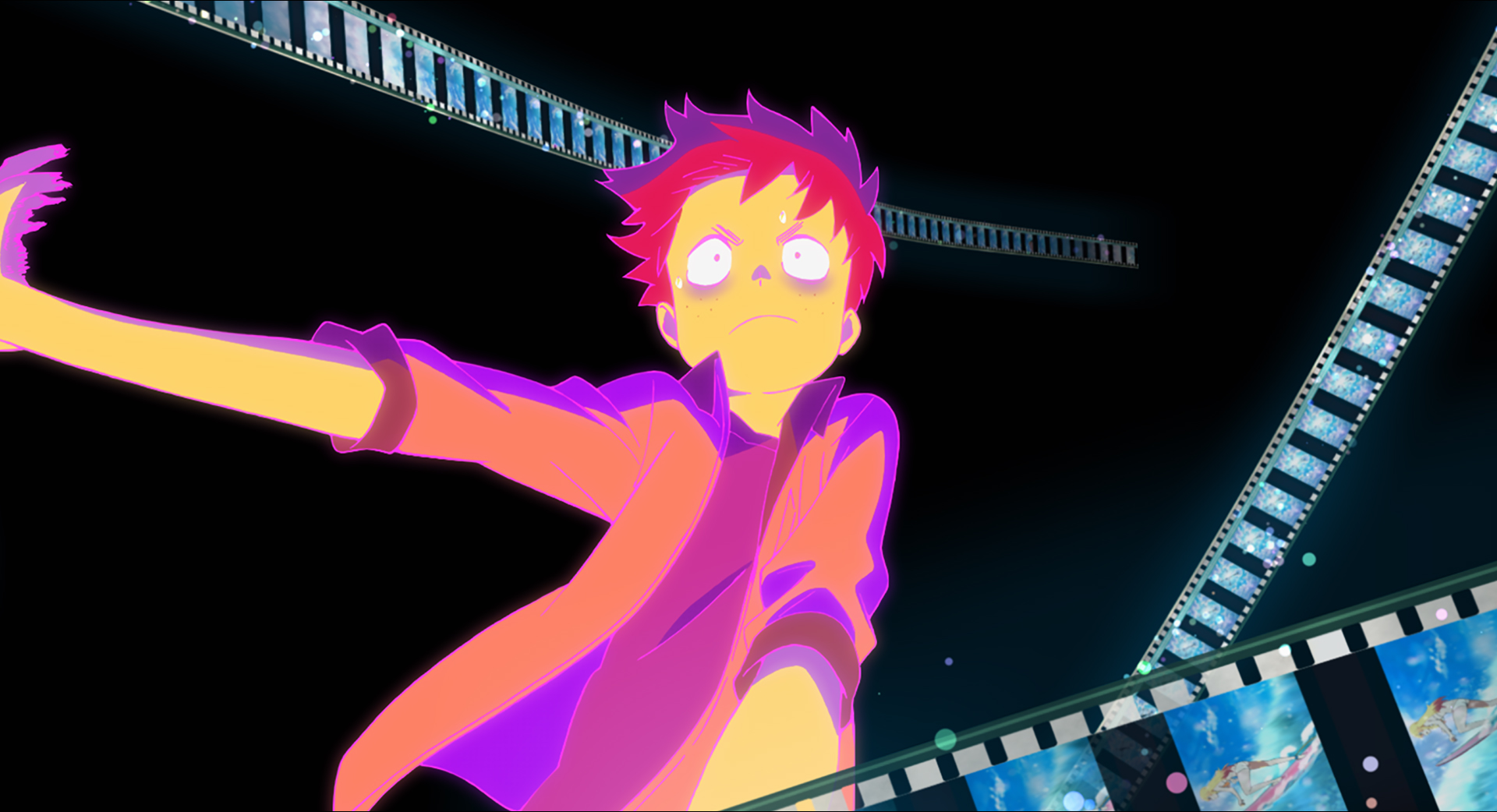
The film also shows scenes where Gene is “in the zone” when editing footage. Instead of watching someone focused on the screen and editing on a keyboard, the film takes a different approach, making film editing seem like it was pure science fiction. The scene puts Gene in a vibrant atmosphere where he slices film in-motion with a sharp blade. To combine footage together, Gene holds out his hand and slides the strips of footage together, making it feel more dramatic than what it really is. Those who’ve worked in the art field, programming, or a project that relies on focus can relate to Gene and his dramatic but amusing editing scenes. It’s also the most action you’ll see in this movie.
While Pompo the Cinephile is about making a movie, it doesn’t go into detail about everything. Pompo handled most of the basic setup for Gene to direct, such as filming locations, scripts, hiring actors, and the orchestra. When it comes to the visual effects shown in the footage that Gene edits, it’s not indicated who did them or how they were done. Moreover, the movie only implied that Gene was able to edit the 72 hours of recorded footage down to 90 minutes. Ironically, Pompo the Cinephile ends right before the credits at 1 hour, 30 minutes, and 30 seconds. It’s also the preferred time length Pompo wants in her films. That is some amazing storyboard work by the studio.
Play That Back
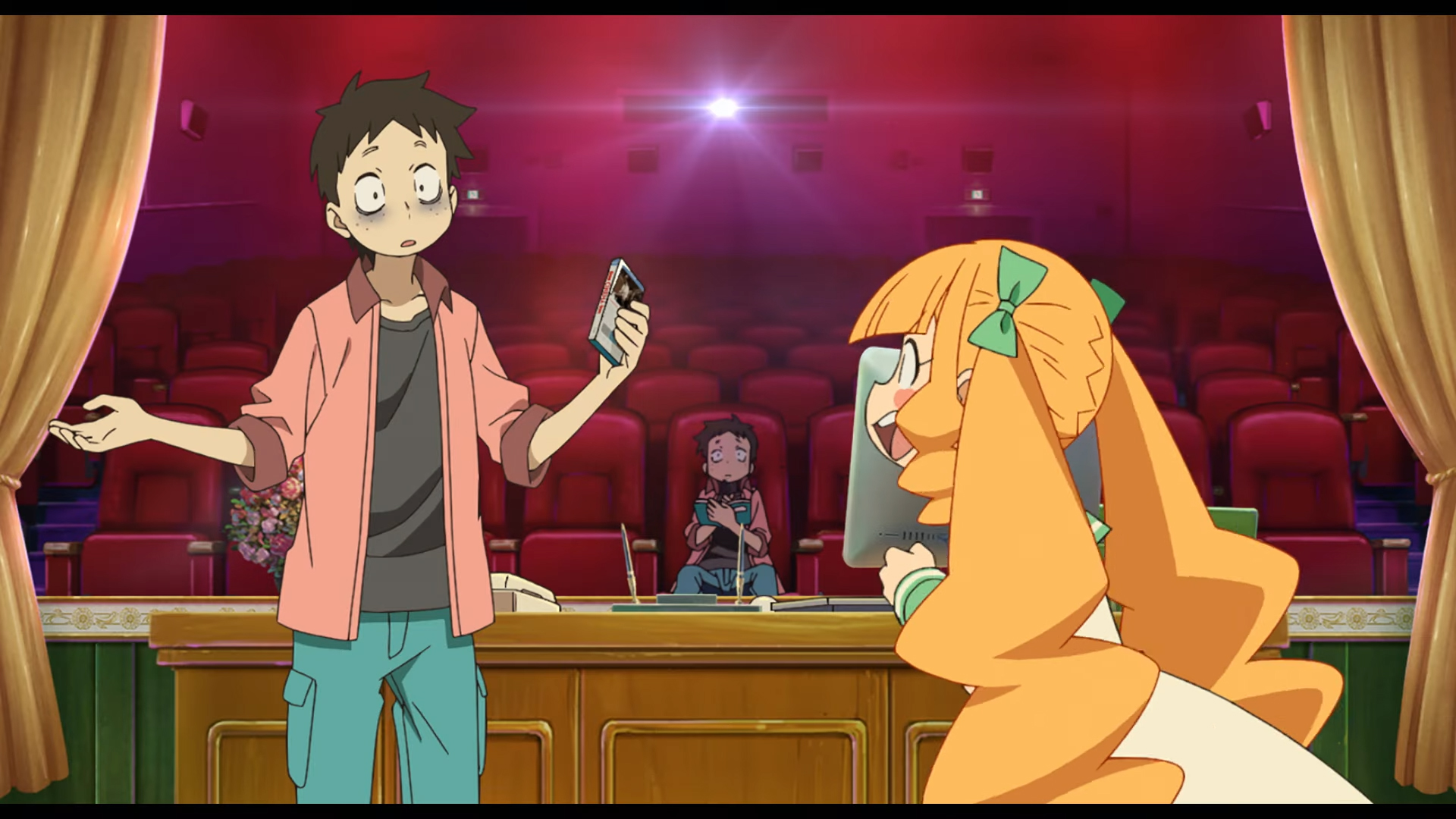
The film’s scene transitions are incredibly creative. Many films use typical cuts or fades to go to the next scene, but in Pompo, it’s innovative. Instead of a simple fade, the movie uses a rewind effect, much like a VHS tape being rewound on screen, to go back in time. In this case, it’s for Nathalie’s backstory after she introduces herself to Gene. It’s confusing at first to figuring out how far back her story begins, how it begins, and where it fits within Gene’s timeline. However, once the story catches up, it falls into place.
Another interesting transition is by way of vehicle wiper blades. Cutting from the current scene to the next with Gene and Pompo driving in a car, the car’s wiper blades animates across the screen to remove the previous scene and go forward. It’s quite nifty.
Some scenes are even injected within each other. For example, Gene is in an empty theater, watching and taking notes on a current scene in the film. Not the film he’s directing but the actual movie itself. It’s almost breaking down the fourth wall, but it does not indicate that. Instead it’s treated as a creative transition between scenes. It’s confusing at first, but once you as the actual audience catch on, it’s a unique way to move from one scene to the next. These distinctive transitions work really well with the medium of animation, and it’s hard to imagine it being as smooth in a live-action film. It’s evident that Pompo the Cinephile not only appreciates the craft of making movies; it actively contributes to it as well.
A Familiar World
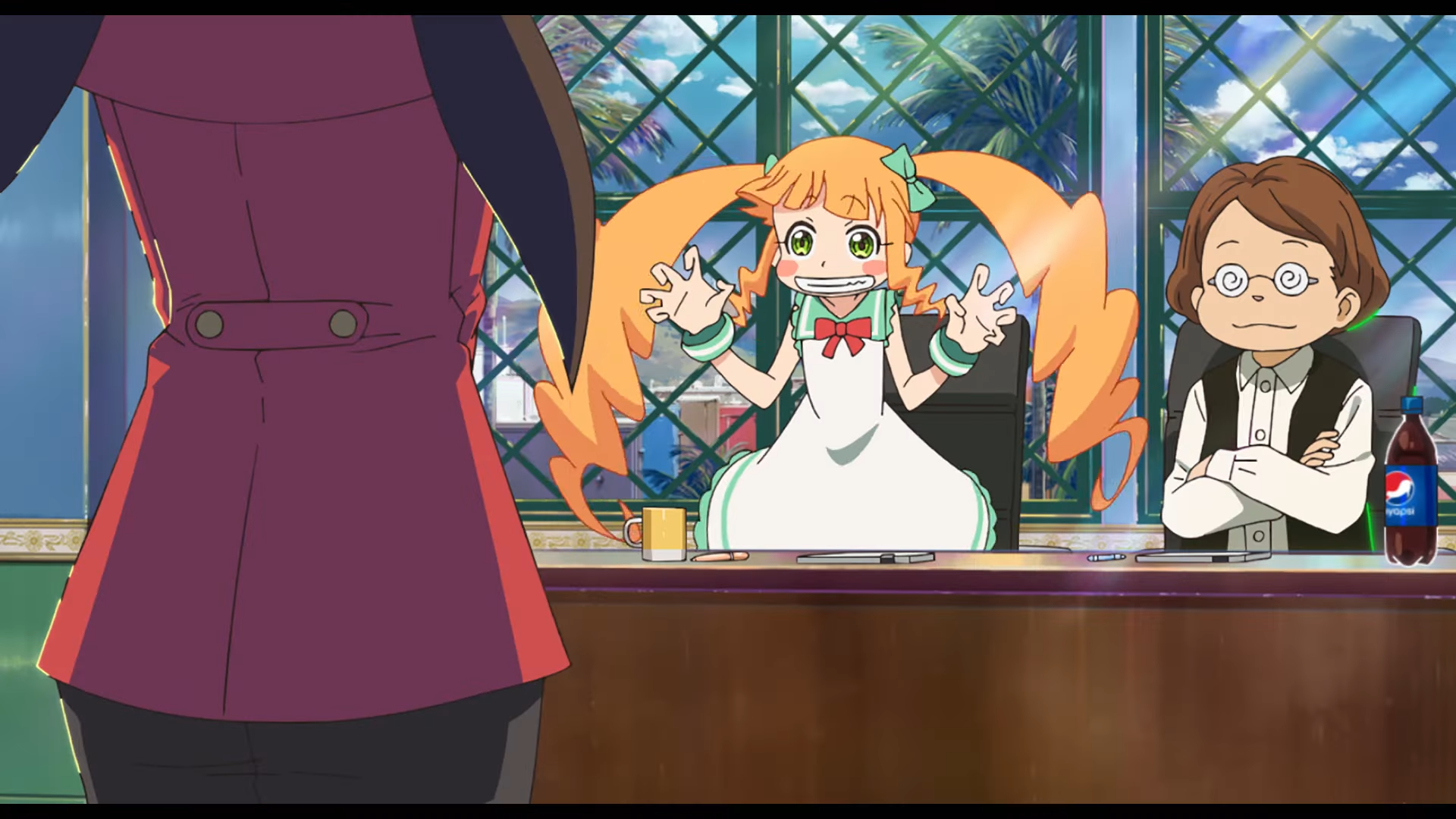
The world of Nyallywood obviously represents Hollywood in Los Angeles, California, USA. The Hollywood Walk of Fame makes an appearance in downtown Nyallywood. Drivers drive on the right side, whereas in Japan, it’s the opposite side. Pepsi products are renamed and its logo altered, almost like product placement. Nathalie’s home in the U.S. countryside even uses interstate signs showcasing her location.
The animation is very colorful and its style is more cartoony when compared to films like Belle. Its music score is mellow and low key. There aren’t too many fast-paced tracks throughout the film, with some exceptions. The intro to Pomp the Cinephile uses a vocal, upbeat track that introduces viewers to the world of filmmaking. When seeing Gene’s editing scene for the first time, an orchestrated track is used, making it feel more dramatic. Also, the film’s ending song, “Open the Window” by Ciel is very upbeat and a positive tune to end the film on. It works well.
That’s a Wrap!
Pompo the Cinephile takes a different approach than any other animated film, focusing on filmmaking itself. It’s not always a glamorous business, but this is the right cut for anyone looking for a different perspective on moviemaking. Plus, it has some of the most creative scene transitions ever put to film. Well done, studio CLAP. That’s a wrap!
An early screening was provided for this review.
